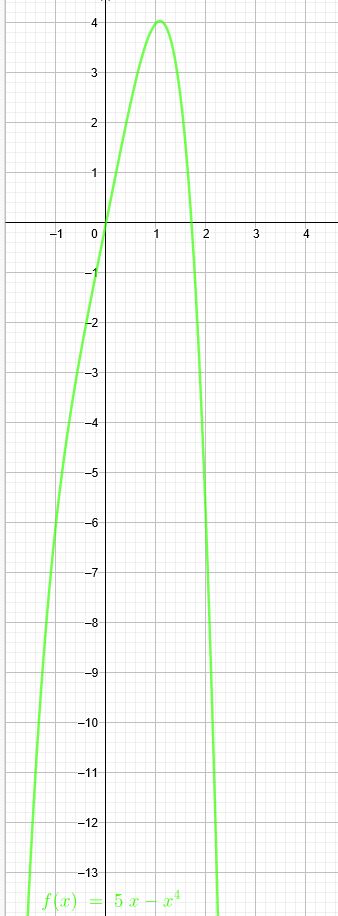\(f(x) = 5x - x^4\)
Nullstellen:
\( 5x - x^4=0\) → \( x\cdot(5 - x^3)=0\) → \( x_1=0\) oder \( x_2=\sqrt[3]{5}≈1,71\)
Extremwert:
\(f'(x) = 5- 4x^3\) →\( 5- 4x^3=0\) → \( x=\sqrt[3]{\frac{5}{4}}≈1,08\) \(f(≈1,08) = 5\cdot 1,08 - 1,08^4≈4,04\)
Die 1.) Nullstelle ist bei \(x=0\). Die 2.) Nullstelle ist bei \(x=\sqrt[3]{5}≈1,71\).
Der einzige Extremwert (Maximum) liegt nun eindeutig im 1. Quadrant.
Ich untersuche nun \(f(-10) = 5\cdot(-10) - (-10)^4=-10050\)
Der Punkt ist im 3.Quadranten. →\( \lim\limits_{x\to-\infty} (5x - x^4)=-∞\)
Ich untersuche nun \(f(10) = 5\cdot(10) - (10)^4=-9950\)
Der Punkt ist im 4.Quadranten.→\( \lim\limits_{x\to\infty} (5x - x^4)=-∞\)
